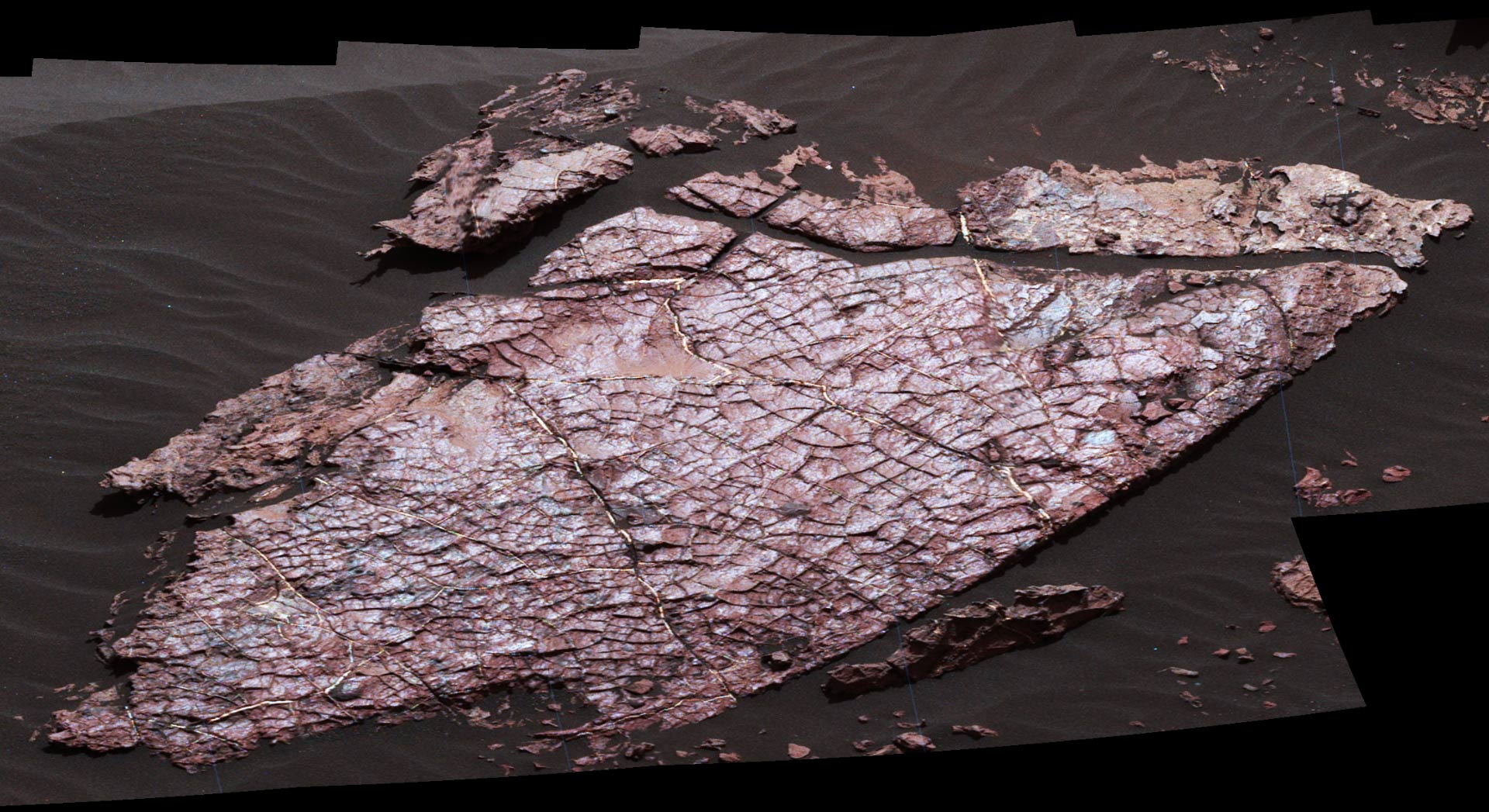
Earth-like mud cracks found on Mars dates back to 3.5 billion years
Last January (2017), NASA’s Curiosity Mars Rover which was sent to study the Martian surface stumbled upon ancient ‘mud cracks’ inside the Gale Crater. The photos sent by the rover through the Mars Reconnaissance Orbiter to the Earth revealed a 30-inch-long slab of rock with a crisscross pattern of polygons. The photos captured by Curiosity’s Mastcam proved to have resemblances to that of extremely dried-out cracks on Earth. The findings were ascertained by the geologists at the California Institute of Technology (Caltech) who studied the photos in order to understand more about the 30-inch-long slab of rock which has been nicknamed as “Old Soaker”.
After spending almost an hour in the study, geologists at Caltech have found out that the Old Soaker are remains of an ancient lake which is believed to have dried up 3.5 billion years ago. It is also confirmed that the mud cracks as seen on the Martian surface are developed due to exposure to air of wet sediment as opposed to what was earlier believed. The study is published in the journal Geology which discusses the subject in detail.
The team of researchers used the data gathered by the Curiosity pertaining to the Old Soaker to learn about the chemical composition of the same. They used Curiosity’s different instruments to learn more about the slab where the Curiosity’s Alpha-Particle X-Ray Spectrometer, ChemCam Laser-Induced Breakdown Spectrometer, Mars Hand Lens Imager, and Mastcam were employed with the task of collecting more information about Old Soaker and proceed it to the team of researchers at Caltech.
Nathaniel Stein, the lead author for the study quoted that Mars Curiosity Rover is a perfect companion to study about the red planet as it acts as a robotic field geologist which collects information about the ancient lake system on Mars piece-by-piece. Per the findings, researchers state that the slab is a result of a lake that once flew over Gale Crater that eventually dried up which resulted in the accumulation of sediments over the years that later formed cracks and ridges on the surface. During the extensive study of the photos and data gathered by Curiosity, researchers were able to comprehend that the desiccated cracks were developed due to exposure to air as opposed to the previous beliefs that these features were formed due to the flow of water or heat.
Mars Curiosity Rover was destined to explore the Martian surface when it was deployed at the Gale Crater. It found the Old Soaker near the edge of the crater which actually is near to the center of an ancient lake bed situated around the Sutton island, Murray formation where the formation of mud cracks dictates the fluctuation of ancient lake levels over time.
The Old Soaker is a piece of a 30-inch-long desiccated slab of rock the size of a coffee table with the shapes formed on it that resembles polygons formed due to exposure to air. It is one of the many discoveries made by NASA’s Curiosity rover which is at the forefront of exploring the red planet which can be a potentially habitable planet for humans in near-future.


